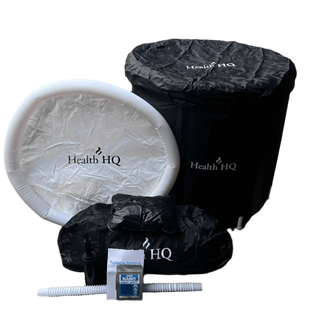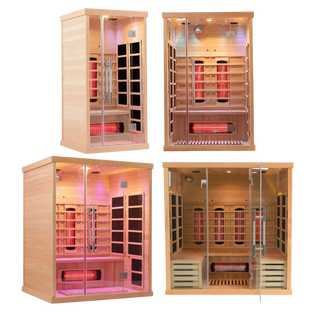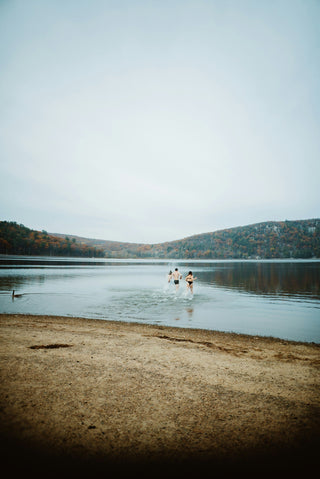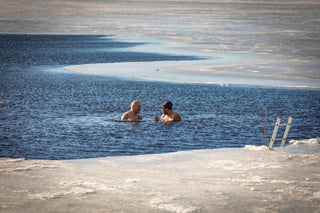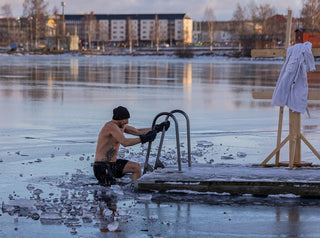What Are the Best Practices for Preparing Before and Recovering After an Ice Bath?
Cold plunges and ice baths are incredible tools for muscle recovery, inflammation reduction, and mental clarity—but how you prepare before and recover after the plunge can make a huge difference in both your safety and results.
Whether you’re new to ice baths or looking to level up your routine, here’s a complete guide to best practices before and after you dip into the cold.
🧊 Before the Ice Bath: Set Yourself Up for Success
1. Know Your Why
Before stepping into the cold, ask yourself:
- Are you using the plunge for recovery after a workout?
- Looking to build mental toughness?
- Seeking better mood and focus?
Your intention helps guide how long you stay in and when you do it (pre- or post-workout, morning vs. evening, etc.).
2. Hydrate (But Not Too Much)
Hydration is important, but don’t overdo it right before a plunge. Drink a normal amount of water in the hour before your session to support circulation and recovery.
3. Warm Up Gently First
Jumping into ice-cold water with tight muscles isn’t ideal.
Try light movement like:
- A walk
- Gentle stretching
- Bodyweight exercises
This gets blood flowing and helps your body adapt more easily to the cold.
4. Set the Right Environment
Prepare your setup:
- Water temp between 50–59°F (10–15°C) is ideal for beginners.
- Have a timer or stopwatch ready.
- Use a mat or towel nearby for aftercare.
- Make sure your exit plan is clear—you don’t want to stumble out barefoot on a slippery floor.
5. Regulate Your Breathing
Right before stepping in, take a few deep, slow breaths to calm your nervous system. The cold will trigger a stress response—training yourself to control your breath is key to adapting.
🛁 During the Ice Bath: Stay Calm, Stay Safe
- Enter slowly but confidently—don’t jump or panic.
- Keep your breathing steady—inhale through the nose, exhale through the mouth.
- You can stay in anywhere from 2 to 10 minutes, depending on your experience level and goals.
- If you're new, start with 1–3 minutes and build over time.
🔥 After the Ice Bath: Warm Up + Maximize the Benefits
1. Dry Off Immediately
Pat yourself dry with a towel to start warming the skin. Change into warm clothes—especially socks and a hat to keep heat in.
2. Rewarm Gradually (Avoid Hot Showers at First)
Avoid jumping into a hot shower immediately. This sudden shift from cold to hot can cause blood pressure swings or dizziness.
Instead, try:
- Gentle movement (light stretching, walking, or air squats)
- A warm herbal tea
- A sauna or warm shower after your body starts naturally warming up
3. Hydrate Again
Cold exposure can increase fluid loss, so drink water or an electrolyte beverage afterward to support recovery.
4. Journal or Reflect
Many people report a “mental high” or heightened clarity after a plunge. Take a moment to check in with yourself, journal how you feel, or set an intention for the rest of your day.
5. Fuel Your Body (Optional)
If your plunge was post-workout, follow up with a nutrient-rich snack or meal to support muscle repair:
- Protein shake
- Banana and nut butter
- Eggs and avocado toast
✅ Bonus Tips for a Better Ice Bath Routine
- Be consistent, not extreme—2–4 times per week is plenty.
- Listen to your body—shivering is okay; numbness is not.
- Track your progress—note how long you stayed in, how you felt after, and how it affected your mood or recovery.
Final Thoughts
Cold plunging can be an amazing physical and mental tool—but it works best when paired with intentional preparation and smart recovery. Treat your plunge like a ritual, not just a shock to the system.
Breathe deep, stay present, and embrace the chill—you’ve got this.


